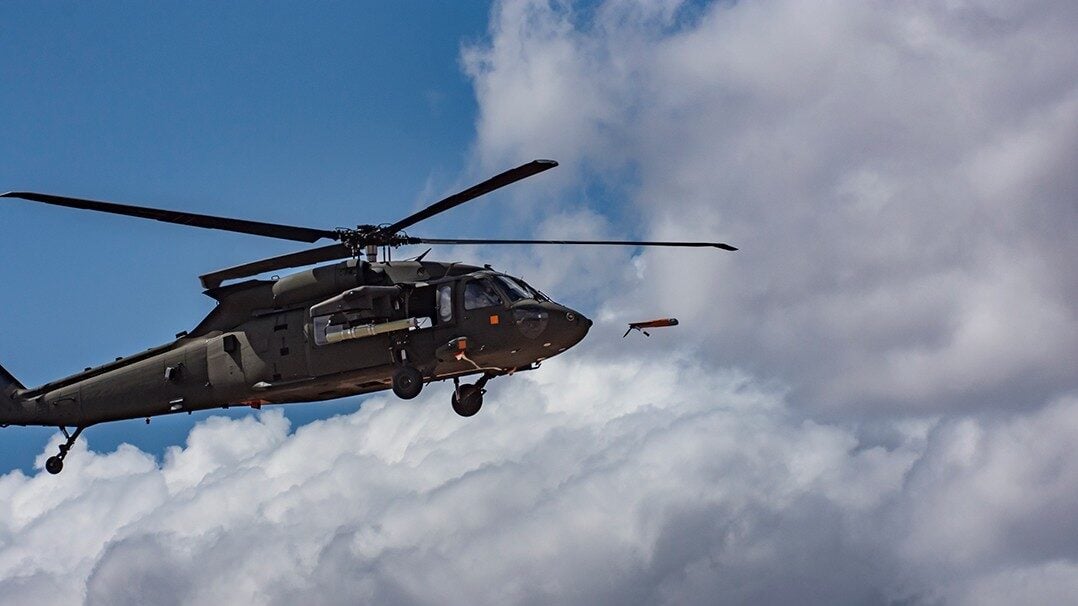ANDREW EVERSDEN

NASHVILLE, Tenn.: The US Army will be “working heavily” with electronic warfare and experimenting with large drone swarms as part of an upcoming sensor-to-shooter experiment in the Utah desert, according to a senior Army aviation official.
The US Army plans to include seven international allies for its second Experimental Demonstration Gateway Exercise that begins at the end of the month.
“We’ll basically be scrimmaging with our partners and allies,” Maj. Gen. Walter Rugen, director of the Future Vertical Lift Cross-Functional Team, said during his presentation at the Army Aviation Association of America conference in Nashville, Tenn.
EDGE is a risk reduction event ahead of Project Convergence, the Army’s annual experiment in Arizona, during which the service ties disparate sensors and shooters together to test capabilities vital for multi-domain operations and Joint All-Domain Command and Control
Rugen said that EDGE 22 will focus on networks and interoperability as part of seven “key” exercise objectives. The exercise, Rugen said, will include two air assaults alongside allies. The Army plans to use electronic warfare, including electronic sensing and electronic attack, to enable the assault.
“We’re gonna see tremendous amount of … electronic warfare, both electronic sense and electronic attack, and all that will begin to generate that decision dominance to set conditions for the air assault and set the conditions for the wet-gap crossing for our ground combat teams,” Rugen said during his presentation.
The Army is also planning to experiment with multi-intelligence sensing capabilities, as well as EW for counter-UAS, at EDGE 22, but Rugen didn’t get into specifics.
The FVL-CFT is expecting at least 20 other DoD organizations to participate, including several other program executive offices, the Army’s ISR Task Force and the Artificial Intelligence Integration Center. Rugen’s presentation showed that Italy, Germany, the Netherlands, Australia, France, Canada and the United Kingdom would participate.
The service is aiming to achieve more than 50 technology objectives, Rugen told reporters at a roundtable, but there will be seven “key” priority objectives for the exercise, including interoperability with allies and refining the network to enable the combined force.
“So if a German squad leader needs an emergency call for fire, you know, how do we do that in an effective manner in a fast, agile manner, back into the 82nd [Airborne Division] BCTs’ [brigade combat teams] TAK [tactical assault kit] and TOC [tactical operations center],” Rugen told reporters during a media roundtable.
The EDGE venue will also host a drone swarm of around 30 Air Launched Effects, essentially mini-drones that can carry different payloads, which will demonstrate both classified and unclassified behaviors, Rugen told reporters.
Among the unclassified behaviors, the ALEs perform autonomous detect and identify of targets, communication in denied environments, provide lethal targeting and complete battle damage assessment. The two-star’s presentation at the conference showed that the ALEs would also carry electronic warfare capabilities and enable cooperative search.
“We’re just creatively working with what is the swarm need to do to be better than maybe what some of the cheap swarms that our adversaries are putting together,” Rugen said.
No comments:
Post a Comment